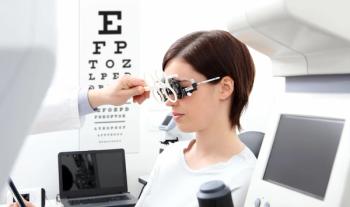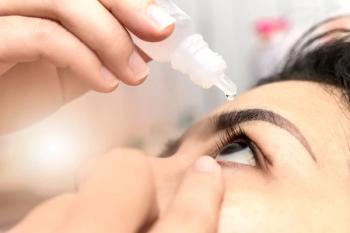
Meds for treating diabetes could damage eye health
Understanding diabetes and the medications used to treat it gives optometrists important tools for contributing to the care of their patients who have diabetes.
Key Points
"It's useful for optometrists to be familiar with the medications used to treat diabetes, because they affect the likelihood of patients developing eye disease-not to mention the patient's likelihood of living a long and healthy life," said Dr. Chous of Chous Eye Care Associates, Tacoma, WA.
"Specifically, optometrists should be able to assess patients' treatment regimens critically by looking at patients' blood glucose levels and asking if what their primary care physicians are doing makes sense," he noted.
Dr. Chous said tight glycemic control is important, especially in newly diagnosed patients with diabetes. The target blood level of glycated hemoglobin (HbA1c ) is 6.5% or less (mean blood glucose of 153 mg/dl) for adult patients with diabetes and without pre-existing cardiovascular disease.
Most oral hypoglycemic agents decrease HbA1c level about 1% to 1.5% at their maximum dosage, he said. This means patients who need to decrease their HbA1c levels more than 1.5% are unlikely to reach target levels with a single oral hypoglycemic agent-which is where most primary care physicians start.
"Selecting the appropriate anti-diabetic therapies is simple math," he said. "If a patient needs to reduce his or her HbA1c levels by less than 1%, lifestyle modifications-such as diet and exercise-might be enough. For a 1% to 2% reduction, oral monotherapy may be enough. For a greater than 2% drop, combination therapies that may include several oral agents, exenatide (Byetta, Amylin Pharmaceuticals), or insulin are typically required."
Dr. Chous noted that the HbA1c test is inexpensive and easy to perform in optometrists' offices. He recommended using a 5-minute assay called the A1cNOW+ (Bayer Diagnostics) to assess glycemic control in patients who are unaware of their HbA1c level and for whom latest results are not easily available.
Additionally, patients who score poorly on the six-question Weill Cornell Medical College diabetes self-assessment questionnaire, who present with fundus findings consistent with diabetic retinopathy, or with symptoms of overt hyperglycemia (polydipsia, polyuria, polyphagia) are good candidates for point-of-care HbA1c testing.
The American Academy of Clinical Endocrinology (AACE) now recognizes an HbA1c level >6.0% to be diagnostic of pre-diabetes, and HbA1c >6.5% to be diagnostic of diabetes mellitus.
Symptomatic eye findings
"Eye findings that make me suspicious of diabetes in my exams include refractive fluctuation, any changes in the retina, premature presbyopia or cataract, and any kind of cranial nerve palsy," Dr. Chous said.
"In addition to overweight/obesity and symptoms, those are some things an optometrist is likely to spot that are indicative of a patient perhaps having diabetes," he added.
Even if optometrists are not comfortable with in-office blood glucose testing, ODs can certainly refer patients with suspected diabetes for laboratory testing. In a patient with confirmed diabetes, critically assessing the treatment regimen and informing the patient's primary care physician of your exam findings is very important.
"You don't need to browbeat primary care physicians, but you can send them a letter reminding them that AACE guidelines recommend that HbA1c be maintained below 6.5%, and letting them know that you have discussed various treatment options and have recommended consultation with the primary care physician to achieve this goal," he said.
Achieving tighter glycemic control through dietary modification, exercise, and pharmacotherapy is the foundation of any good diabetes treatment plan, Dr. Chous explained.
"The risk of virtually every diabetes complication, including sight-threatening eye disease, increases with increasing levels of hyperglycemia," he said. "Improving blood glucose control ameliorates virtually all metabolic abnormalities associated with diabetes."
Newsletter
Want more insights like this? Subscribe to Optometry Times and get clinical pearls and practice tips delivered straight to your inbox.
















































.png)


